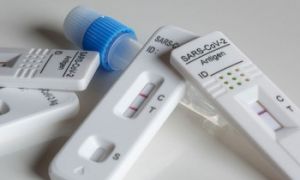Among all the changes that impact a child’s early life, one of the most significant is the move from early education and care setting to a full-time school. The change not only involves entirely new people and places but longer schedules, a more structured environment and greater individual responsibility. The following article provides information on supporting children's transition to school including Involving Children and Families, Supporting Continuity Of Learning, Transition Programs and more.
Involve Children With Starting School
Listening to and involving young children in transition planning is key to building their confidence, skills and motivation for the new chapter in their lives. Not all of this can be ensured by school readiness programs as these tend to overemphasise a child’s academic or physical skills over health and strong, authentic relationships. Instead, create more opportunities to talk to children about what it will be like in school along with giving realistic information about school expectations. Here are some more practice ideas to involve children with starting school:
- Use activities, meetings or workshops to familiarise children and their families with the processes, rules and expectations that are often present in school environments. For example, ask children to draw, paint or use other materials like clay and cardboard to depict what they think school might be like, what they are looking forward to and what their concerns might be. Similarly, educators can also read stories about starting school with children, role-play scenarios and then discuss the various elements and expectations raised in these.
- Allow enough time for children to talk about school and the expectations around it. These might include their experiences of transition programs or visits, the things their older siblings tell them about the school, their expectations of what school will be like, or how the school will be the same or different from their current ECEC service. Making ample time for such conversations will also help you address any misunderstandings and allay any fears that the child might be experiencing.
- In your service’s Transition Statement, ensure there is a section specifically for the child to consider what they would like their new setting to know about themselves. This provides valuable insights about the child for the receiving school and OSHC service and can also be used as a conversation starter when they meet the child.
- Develop children’s social skills like turn-taking, sharing, listening, negotiation, collaboration, basic manners, recognising personal space, and following instructions so that they can initiate and maintain respectful relationships with peers.
- Promoting buddy programs that use of peer-to-peer support strategies for children (and sometimes families) to assist in the transition to school.
Partner With Families
Families know their children best which is why for any transition strategy to succeed, it is crucial that educators involve and collaborate with children’s parents and close family members. Following are some ways this can be done:
- Adopt a non-judgemental and honest approach that is responsive to the family’s unique situation; for example, when discussing the food and nap schedules of a child, keep an open mind on what would best synergise with the parents’ work and family dynamics. A non-judgmental approach is also important for you to identify personal and culturally influenced beliefs or habits that might be different from those of the families you are working with.
- Listen to each family’s priorities and perspectives about their child with a genuine interest to inform shared decision-making and promote each child’s learning and development. For example, some families may feel more strongly about the academic achievements of their children than other families.
- actively engage families and children in planning for ongoing learning and development in the service, at home and in the local community. For example, organise a transition-to-school community forum for families in collaboration with local schools, where teachers can provide information and talk about their school and a panel can answer families’ questions.
- Share information in a way that supports families’ confidence, identifies what families do well, and recognises families’ critical importance in their child’s life. For example, let families know how to access the support available within schools for early childhood learning and development. Organise picnics, BBQs, children’s cultural festivals or library events for fun ways for transitioning families to meet and get to know each other informally.
- Make opportunities for families with older children to provide good support to families experiencing transition for the first time. Guide families to government websites and reliable online resources if they need more advice on school travelling to school, uniforms, immunisation, literacy and maths tips.
Part of engaging with families also involves educators discussing sensitive matters about children, such as concerns about a child’s behaviour or development or a child’s safety and protection. Some strategies that can support educators in discussing difficult issues with parents are:
- Building rapport with families beforehand so that when sensitive issues arise, they are at least more willing to listen to you.
- Adopting a warm, authentic and non-judgemental approach when discussing difficult issues.
- Accepting cultural diversity, and avoiding stereotyping individuals or groups of people.
- acknowledging that families might differ in their communication styles and preferences. Indeed, as you engage families during the transition process, you will get more opportunities to find out about their preferences for having conversations, including difficult ones, in the future.
Support Continuity Of Learning
Plan learning experiences for continuity of learning experience between ECEC services and schools so that children experience a smoother transition. Some ideas for educators include:
- Arranging for reciprocal children’s visits whereby children attending ECEC services visit the primary school before school starts, like in Term 4 of Kindergarten; likewise, children from the previous year who are at school can visit the ECEC service to talk about the transition to school from their perspective. Parents of the school children can be invited to talk to this year’s parents.
- Scheduling time for reciprocal visits between educators from school and kindergarten to observe each other’s curriculum and pedagogy.
- Using familiar play-based learning spaces in the school and OSHC services and sharing some materials and equipment across sites. For example, primary school or OSHC services can set up book corners with some of the same books that the children read in ECEC services.
- Creating supportive learning environments like adding school uniforms and other related resources to the home corner.
- Supporting children’s learning about road and bike safety as part of school readiness planning.
- Working with children to develop social storyboards that include, for example, photos of their prep teacher, school environment, the OSHC program (if applicable), and how to get ready in the morning. These documents are a useful way of visually depicting the type and processes involved in transitioning to school.
- Drawing on the learning outcomes of the EYLF and those of the first three levels of the school curriculum in order to reflect on the learning and development that has occurred and plan for the next steps
Plan A Local Transition Program
Educators can use the following strategies and steps when planning a local transition program:
- Establish a local network or revise an existing one
- Identify a key person to lead transition planning within each ECEC service and school
- Set up a communication system within the network; this might include regular meetings, emails, chat groups among others
- Involve services, schools, families and community representatives to identify local needs for transition to school
- Agree on goals for the transition program
- Generate program ideas by working out what activities will meet the requirements of local children, families and early childhood professionals;
- Look for ways to involve the community too; for example, local businesses can be encouraged to display posters congratulating new school entrants or they sponsor transition forums or school bags for children; local government can ensure children will be safe going to and from school by providing supervised crossings and informing families about driving and parking safely near schools.
- Identify timelines but be ready to adapt if necessary.
- Zero in on what is not working and jointly find solutions
- Implement the program
- Monitor program activities and timelines and engagement of children, families and early childhood educators
- Evaluate and revise the program.
Each community – indeed families too within the same community – will have its own priorities and views about what will work best when their child moves from an ECEC setting to full-time school. So it is important that educators and services consider all aspects when designing transition activities or processes.
Support Diversity
Transition programs that support and celebrate diversity help to support a positive start to school for all children and families. To implement culturally aware and competent transition processes, educators can make use of the following strategies:
- Engage interpreters and provide information for families whose home language is not English.
- Link Aboriginal and Torres Strait Islander families to community representatives or support agencies.
- Invite family members to come and stay in the classroom for a little longer at the start of the day; but also bear in mind that for children from Aboriginal and Torres Strait Islander communities, the family might include a wider group of people beyond the parents and immediate members.
- Recognise that oral communication is greatly valued and used widely within the indigenous communities; also make their history and culture more visible in curriculum content and service processes like flying the Aboriginal or Torres Strait Islander flag together with the Australian flag
- Be aware of gender biases and challenge gender stereotypes to help children develop a secure sense of self and respectful relationships, as well as to ensure high expectations for all children.
Preparation and planning to facilitate an effective transition from ECEC to school are especially important for children with disabilities or developmental delays. This includes identifying whether the child will be attending OSHC so that educators can be included in the transition process. Other strategies educators can use to support the transition process are:
- Starting transition planning early, like in Term 2 of Kindergarten, which includes establishing links with the child’s prospective school earlier than usual.
- Making referrals to early childhood intervention (ECI) professionals paediatricians, occupational therapists or a speech pathologist in case they think a child needs further assessment and advice.
- Developing appropriate learning and development plans in collaboration with relevant specialised professionals
- Providing aids and equipment to children with additional needs, for example, mobility aids or communication devices.
- Providing comprehensive information about the school and transition process to children and families so that there are ‘no surprises when the child starts school.
- Ensuring that each child has a transition plan that is tailored to their specific abilities.
- Gathering additional information about the child that might need to be assessed and made available to the school - for example, detailed reports and advice from allied health professionals.
- Applying for funding where significant support is required; an example could be the Program for Students with Disabilities for children attending government schools, kindergarten inclusion support and flexible support packages as well as including support for children attending outside school hours care (OSHC)
Collaborate With Other Professionals
Apart from ECEC educators and school teachers, there are other professionals involved in the transition to school, like those from maternal and child health services, health, well-being and early intervention sectors, Child Protection and Community Service Organisations, Aboriginal Community Controlled Organisations, out-of-school-hours care services. Effective collaboration among all these roles is essential to making transition experiences and outcomes positive for children and families. ECEC educators can promote such collaboration by:
- Designating a person in the ECEC service whose role is to coordinate and collaborate with all the different professionals involved in the transition to school.
- Providing a transition-to-school statement for each child’s school teacher that includes educator, child and family perspectives. For example, children draw a picture and you, or a parent, write what they say about the picture or themselves.
- Building partnerships with a local school so that you and the children are regular visitors to the school and the school teachers are regular visitors to your centre; similarly, visit the school library and work with the librarian to foster book borrowing and sharing stories at the centre and at home.
- Regularly meeting up with prep teachers and OSHC educators and visiting each others’ environment for joint teaching, transition planning, and so on.
Further Reading
School Readiness Program - This article provides information on implementing a school readiness program in an early childhood setting.
Development Of School Readiness Skills Posters - The following posters are developmental skills that support a child's school readiness. The skills are separated in each of the appropriate developmental learning areas. You can use the skills as part of your program in determining suitable experiences for preschool children. The list of developmental skills is an essential part of a child's short and long-term success when starting school.
References:
Transition To School Resource, Department Of Education Victoria
Transitions Moving Up and Moving On, ACECQA







 As an Educator in Australia, your pay rate falls under the Children’s Services Award 2010. This award states the minimum amount that an employer can
As an Educator in Australia, your pay rate falls under the Children’s Services Award 2010. This award states the minimum amount that an employer can When working as a qualified Early Childhood Teacher (with a university degree) within a service, your rate of pay will come from the Educational Services
When working as a qualified Early Childhood Teacher (with a university degree) within a service, your rate of pay will come from the Educational Services When working as a Diploma Qualified Educator your pay rate is from the Children's Services Award 2010. This Award states your minimum rate of pay
When working as a Diploma Qualified Educator your pay rate is from the Children's Services Award 2010. This Award states your minimum rate of pay When working as a Cert 3 Qualified Educator, your pay rate is from the Children's Services Award 2010. This Award states your minimum rate of
When working as a Cert 3 Qualified Educator, your pay rate is from the Children's Services Award 2010. This Award states your minimum rate of Educational Leaders play a crucial role in their early childhood service by ensuring that the educational program aligns with best practices and supports the holistic
Educational Leaders play a crucial role in their early childhood service by ensuring that the educational program aligns with best practices and supports the holistic In early childhood education and care, ratios are more than a technicality—they are a frontline safeguard. Every child deserves responsive supervision, emotional connection, and developmental
In early childhood education and care, ratios are more than a technicality—they are a frontline safeguard. Every child deserves responsive supervision, emotional connection, and developmental Here’s a comprehensive Mobile Phone and Smart Watch Policy tailored for early childhood education and care (ECEC) services in Australia, aligned with the latest 2025
Here’s a comprehensive Mobile Phone and Smart Watch Policy tailored for early childhood education and care (ECEC) services in Australia, aligned with the latest 2025 With the new national child safety reforms kicking in on 1 September 2025, early childhood services like yours have a real opportunity to lead the
With the new national child safety reforms kicking in on 1 September 2025, early childhood services like yours have a real opportunity to lead the The Sea of Fish Challenge is a national initiative that invites children, educators, families, and communities to create and display fish artworks as a symbol
The Sea of Fish Challenge is a national initiative that invites children, educators, families, and communities to create and display fish artworks as a symbol Across the early childhood education and care sector, educators are sounding the alarm: current staffing ratios are insufficient to deliver safe, meaningful, and developmentally appropriate
Across the early childhood education and care sector, educators are sounding the alarm: current staffing ratios are insufficient to deliver safe, meaningful, and developmentally appropriate


